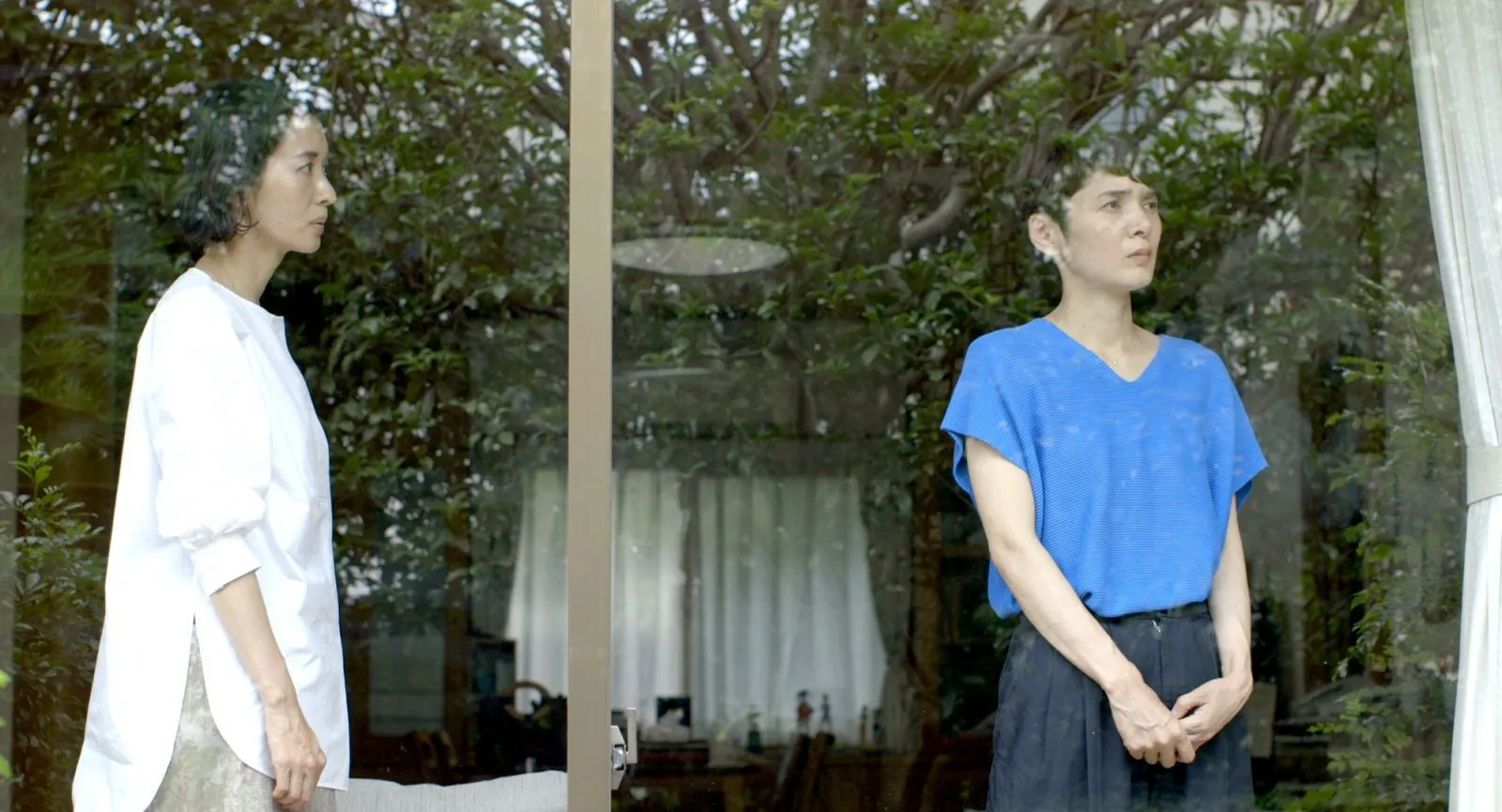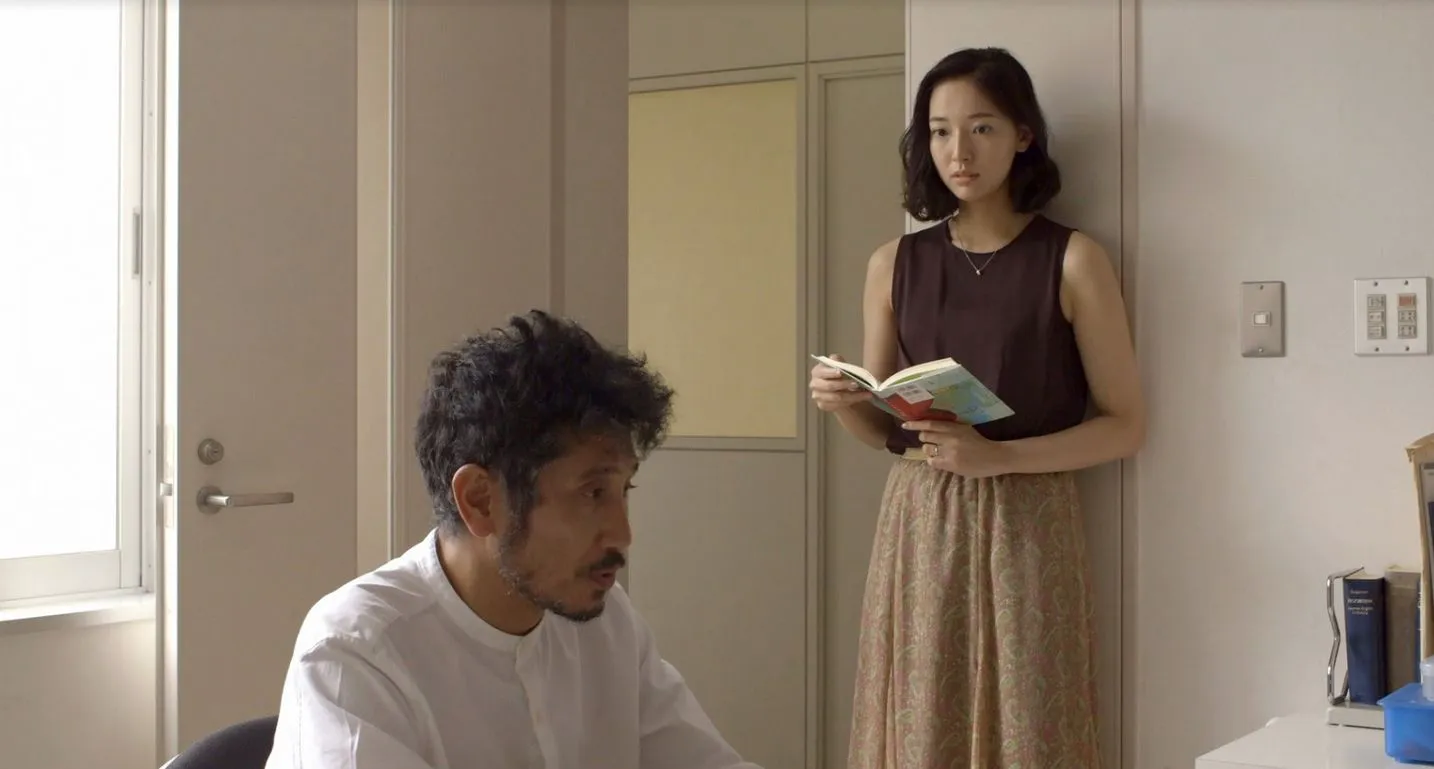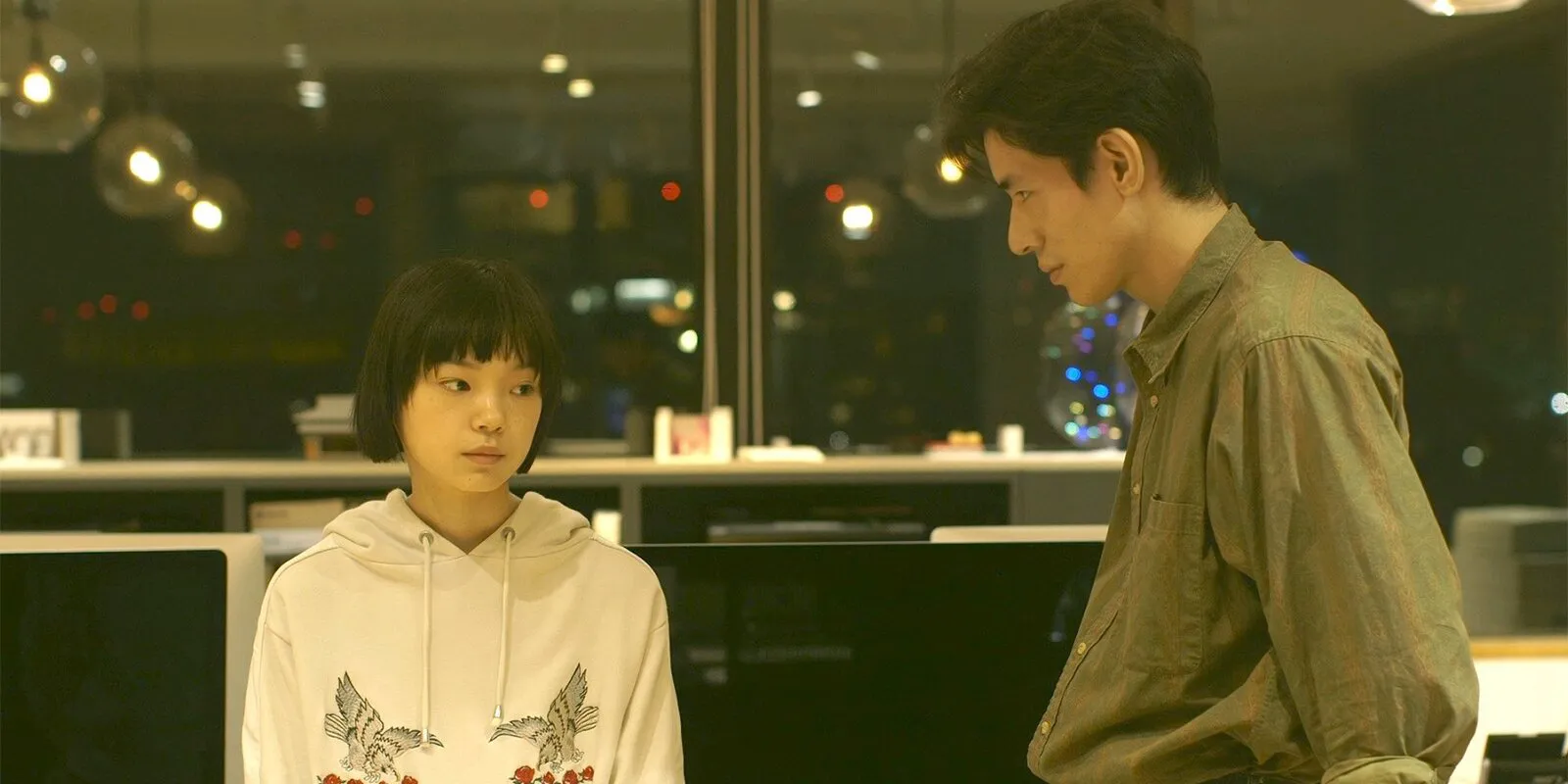Short films often don’t get the recognition they deserve. They’re remembered and talked about far too rarely, often relegated to the fringes of the film industry. However, there are times when small stories, packaged together, create a unique synergy of different perspectives. Prime examples that come to mind are Jim Jarmusch’s works like “Coffee and Cigarettes” and “Night on Earth.” These films share a common thread and have similar thematic echoes. Ryusuke Hamaguchi’s starting point, on the other hand, is a moment of surprising coincidence, reminiscent of the pure magic that sometimes happens to people in everyday life.

Fusako Urabe as Moka in a still from “Wheel of Fortune and Fantasy”
The Structure of Serendipity
“Wheel of Fortune and Fantasy” unfolds as a triptych of interconnected short stories, each exploring the unexpected turns life can take.
Episode 1: Magic (Or Something Less Assuring)
The first story follows Meiko, a model, as she returns home from a shoot with her friend Tsugumi. In the taxi, the girls discuss their love lives, during which Tsugumi shares details about a guy she recently met. As she describes her encounter, Meiko realizes she knows this man.
Episode 2: Door Wide Open
The second tale centers on Nao, a married woman and college student who feels like an outsider. She’s having an affair with her classmate, Sasaki. One evening, they learn that their professor has received a prestigious award. Following Sasaki’s indignation, Nao decides to challenge the professor, leading to unexpected consequences.
Episode 3: Once Again
The final chapter begins with a computer virus that has forced everyone offline. A young woman, now an unemployed programmer, returns to her hometown for a high school reunion, hoping to reconnect with her first love.

Katsuki Mori as Nao in a still from “Wheel of Fortune and Fantasy”
Modernist Echoes in Filmmaking
In its form, “Wheel of Fortune and Fantasy” echoes modernist literature, where traditional linear narratives are replaced by fragmentation and discontinuity. As if following the tradition of Woolf, Hamaguchi disregards plot and focuses our attention on revealing the psychological states of his characters. These flawed individuals contemplate what they haven’t done, missed, or said. In each story, there’s a notable absence of action: whether it’s a continuous scene in a taxi or a lengthy conversation between two strangers, we observe their reflections rather than their actions. The energetic flow, where the essence is conveyed through words, is the form the director has chosen.
Each episode highlights compelling female characters facing challenging situations. Grappling with past relationships, the desire to escape routine and become someone else, and re-evaluating youthful traumas – while these themes aren’t exclusive to women, Hamaguchi, by making his protagonists young girls and middle-aged women, showcases their resistance to an external world that has cornered them.

Kotone Furukawa as Meiko in a still from “Wheel of Fortune and Fantasy”
A Disconnected Whole?
Where other filmmakers might have attempted to forge stronger connections between these stories, the Japanese director allows his characters to live their own lives. This makes each chapter more independent but also more detached from the others. The charm and tenderness of the interwoven plots are undeniable, but their synthesis often feels somewhat incompatible, disrupting the work’s overall coherence. In other words, one could divide “Wheel of Fortune and Fantasy” into three parts and watch them on different days and still derive enjoyment.
However, it cannot be denied that this seemingly random collection of chapters reflects the film’s very nature. The characters are swept up in a series of coincidences and unconscious decisions: a mistakenly sent message, a magical encounter with a former lover, a fateful meeting on an escalator. It is from these minute events, protruding from the mundane routine, that the fullness of life is composed. And the characters, like any of us, wonder whether coincidences are truly random or whether we simply want to believe in fate.